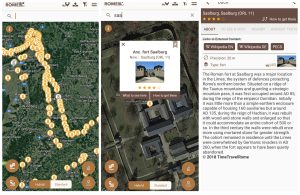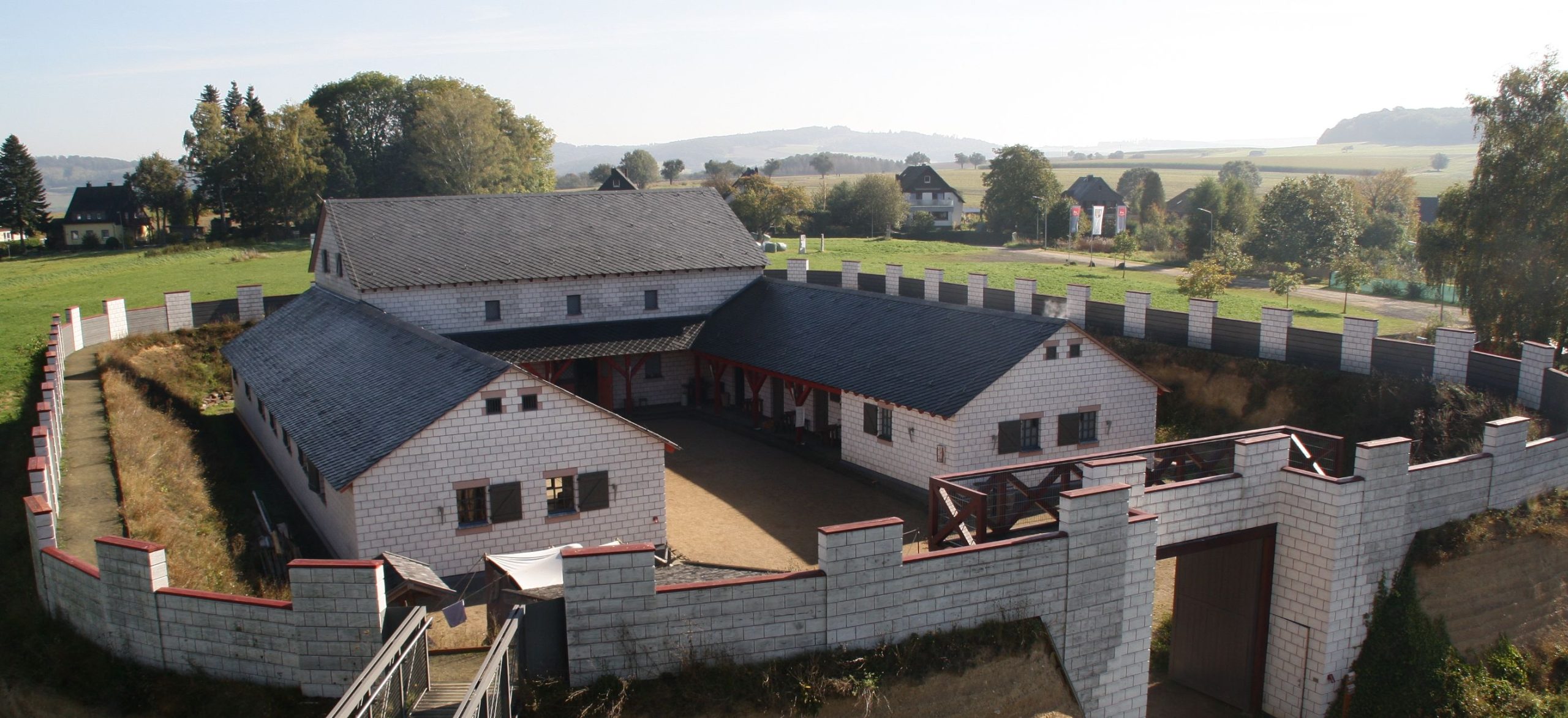The Upper German-Rhaetian limes (called in German “German Obergermanisch-Raetischer Limes” – ORL) was part of the Roman Empire border and included a number of defensive structures such as forts and watchtowers. The huge defensive line was erected by the Romans to protect the borders of the Germany superior and had a length of 550 kilometers, passing between the Rhine and the Danube.
The systematic excavation and study of the ORL limes was first conducted at the end of the 19th century by the German Imperial Limes Commission (RLK) under the direction of the famous historian, Theodor Mommsen. The Commission numbered the various sections of the defensive network, and attributed numbers to all forts and the watchtowers (Wp) on the individual sections. For example, the beginning of the Upper-Germanic-Rhaetian Limes is at Rheinbrohl and the “caput limites” is marked by the watchtower 1/1. The first 75 km of the Limes, consisting of 131 guard posts, 9 small castles and 9 kohort castles, run through the Rheinland-Pfalz region.
The ORL line was visited recently by Michel Gybels: Michel’s photos and comments, together with selected TimeTravelRome content, are presented in this post about the most interesting ORL sites.
Rheinbrohl – Where the limes begins
Rheinbrohl fort stood on the right bank of the Rhine and comprised a single building surrounded by a wall defended by two trenches to deter attack. It appears to have been destroyed by fire around the time that the Limes were finally abandoned – any remains of the fortlet have been destroyed in the process of gravel extraction.
Because it is located near the point where the Limes defences begin, Rheinbrohl is the site of an official Limes Visitor Centre. A nearby reconstructed Limes watchtower near Rheinbrohl has been criticized for its inaccuracy but elsewhere it is possible to find traces of the original rampart as well as a reconstructed section of palisade.
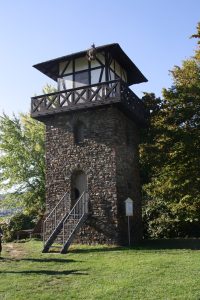
Reconstructed watchtower. Photo by Michel Gybels.
RömerWelt and Limes Museum in Rheinbrohl offers an interesting overview of this site history, and replicas of various objects and materials from the Roman period can be seen.
Idstein Tower – ORL WP 3/26
On initiative of the citizen of Idstein, Ottmar Weigel, a reconstruction of the Roman watchtower was built in 2002 according to the latest scientific findings and not far from the location of the tower in ancient times. The forces deployed in the towers guaranteed the guarding of the Limes. The ground floor was used for the storage of food. On the central floor, the living room and the entrance were located, accessible only by ladder. The upper floor served the guarding purposes. The towers had a coating of white plaster with carved-in gaps painted in red. A perfect production of Roman culture at the edge of the Meditteranean world !
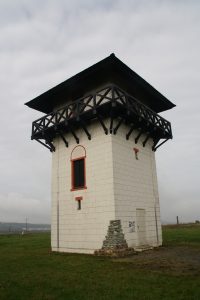
Reconstructed tower. Photo by Michel Gybels.
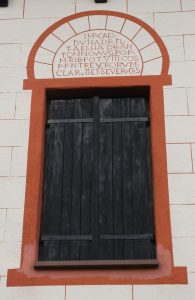
Window decorative elements. Photo by Michel Gybels.
Pohl bei Nassau – between ORL 5 and 6
Pohl bei Nassau is the site of a small Roman fort that was formerly located at a point where the Limes take an abrupt change of direction, and thus of considerable strategic importance, its date of construction is unknown, as is the identity of the troops manning it. The site of the original fortlet is partly built over and no longer visible at ground level.
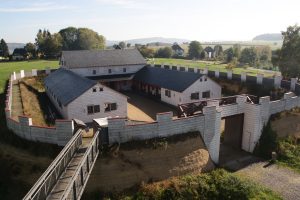
Reconstruction of the fort – general view. Photo by Michel Gybels.
However, a reconstruction of the whole fort, complete with furnished barracks, ramparts and adjoining watchtower, has been built close by and is open to the public. Based on archaeological evidence, this reconstruction of a typical Roman border fort is remarkable for its authenticity and attention to detail, down to sleeping quarters and personal belongings of the garrison.
The exemplary reconstruction of this heritage has a long history in the region. As early as 1874, the first replica of a watchtower was built in Bad Ems. The Pohl replicas continue this tradition of presenting the historical Limes.
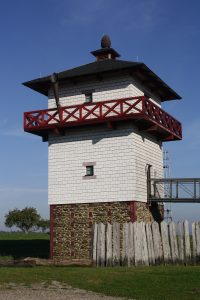
Castle tower. Photo by Michel Gybels.
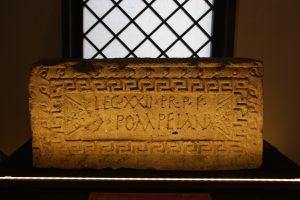
Stone with an inscription referring to the legion stationed in the area. Photo by Michel Gybels.
Holzhausen – ORL 6
In the woods of Holzhausen an der Haid visitors will find one of the best-preserved Limes forts, the so-called Kastell Holzhausen. It was erected in the mid-3rd century CE during the reign of Roman emperor Caracalla and used until the abandonment of the Limes in 260 CE. The fort was home to an infantry unit, the Cohors II Treverorum, consisting of 480 foot soldiers. The foundation walls of the corner towers and the towers of the fort’s four gates are exposed as well as the stone foundations from the headquarters building (principia) with its semicircular apsis that contained the military standards (aedes).
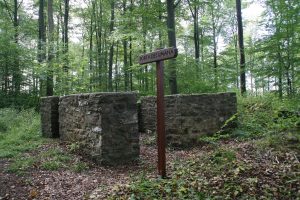
Remains of the Porta Decumana. Photo by Michel Gybels.
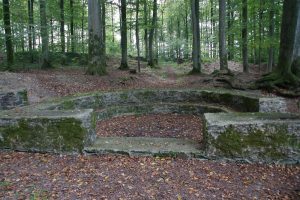
Traces of the roman construction. Photo by Michel Gybels.
Feldberg – ORL 10
After the establishment of the Limes, several years passed until the Roman Feldberg Fortress was built in 150 CE at the level of the mountain pass at the so-called “Red Cross” on the Feldberg. Near the fort a residential community (vicus) soon developed which extended southwest and southeast of the camp. To the north of the fort, a bathhouse was erected to serve the Roman soldiers. Due to their long service period of over 25 years, many Roman soldiers stayed there and, after their service, mixed with the local population with whom they founded a family. They then continued to live from farming, hunting and small-scale handicrafts.
At 700 metres, the Feldberg Fortress is the highest of the entire Germanic Limes. The crew of the fort consisted of 150 to 200 men, who presumably came from what is now Hungary. An inscription from the period of Emperor Severus Alexander, who reigned from 222 to 235 CE, shows that the fortress had to guard and control the passage to the “Red Cross”. The towers and corner fortifications were built in stone and reinforced by an earthen wall. The porta praetoria and the porta decumana were located in the centre of the fort, while the right and left corner fortifications gave access to the via principalis, the main road leading to the fort.
To the north of the fort are the remains of the bathhouse, consisting of an apodyterium or changing room, a caldarium (hot bath), a large piscina or swimming pool, a frigidarium or cold bath and a sudatorium or exchange bath.
The site is easily reached on a walk starting from the “Red Cross” parking lot on the Feldberg.
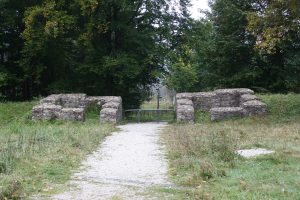
The fort’s gate. Photo by Michel Gybels.
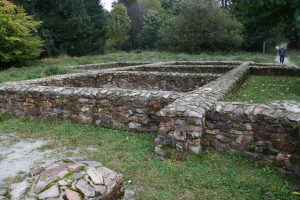
Remains of the bathhouse. Photo by Michel Gybels.
Saalburg – ORL 11
The Roman fort at Saalburg was a major location in the Limes. Situated on a ridge of the Taunus mountains and guarding a strategic mountain pass, the fort was built during the reign of Emperor Trajan at the beginning of the 2nd century AD, this fort served for 150 years as a base for frontier troops. From here, the 600 men of the Second Raetian Cohort protected the Limes in the Upper Taunus. it was first occupied around AD 85, during the reign of the emperor Domitian. Initially it was little more than a simple earthern enclosure capable of housing 160 auxiliaries but around AD 135, during the reign of Hadrian, it was rebuilt with wood-and-stone walls and enlarged so that it could accommodate an entire cohort of 500 or so. In the third century the walls were rebuilt once more using mortared stone for greater strength. The cohort remained in residence until the Limes were overwhelmed by Germanic invaders in AD 260, when the fort appears to have been quietly abandoned. Emperor Wilhelm II ordered the fort carefully reconstructed (1897 to 1907) to serve as a research institute and open-air museum.
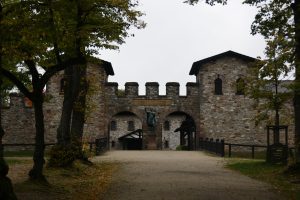
Reconstructed fort’ main gates. Photo by Michel Gybels.
Saalburg boasts the most complete reconstruction of a Roman fort anywhere in Germany. The structure now dominating the site represents the fort as it looked in the third century AD, complete with gates, double ditches, and, within the walls, various buildings arranged around a large principia or courtyard. These include an assembly hall, the commander’s residence, storehouses, and two barrack buildings. The fort is also home to the Saalburg Museum, which contains numerous finds relevant to the German Limes. Parts of the neighbouring vicus have been excavated and include traces of a mansio and of a large bath used by soldiers as well as the ruins of private houses. Another feature is a reconstructed shrine to Mithras, who was widely worshipped among Roman troops (although such practices at Saalburg remain speculatory). The route followed by the Limes is clearly visible at Saalburg and it is possible to follow it a considerable distance through the surrounding landscape. South of the fort is also a replica Jupiter column, erected in 1912.
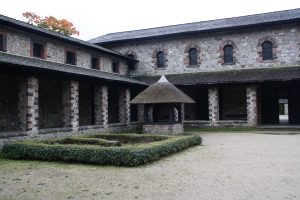
Restored inner court of the fort. Photo by Michel Gybels.
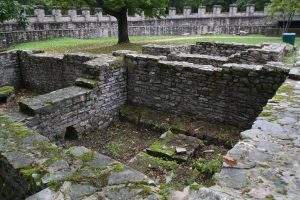
Remains of original Roman constructions within the fort. Photo by Michel Gybels.
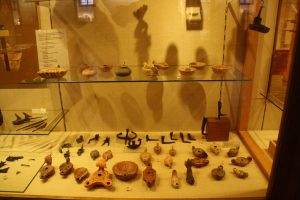
Stand with the oil lamps – part of the Museum’s exhibition. Photo by Michel Gybels.
Osterburken – ORL 40
Kohortenskastell, Osterburken, is the site of a Roman fort that was one of many such fortification making up the defensive system today referred to as the Upper German Limes. However, Osterburken is the location of the best-preserved Roman fort in Baden-Württemberg. Constructed from stone around AD 160 as a cohort fort, it was recategorized as a double fort accommodating two legions around 190, when it was extended (by the Legio VIII Augusta) through the addition of an annex on adjoining sloping ground. The fort remained in use until the middle of the third century, enduring an attack by Germanic invaders in the year 233 and suffering eventual destruction some time between 249 and 260. Evidence of burning and finds of weapons and skeletons suggest a violent end to the Roman presence here. Units known to have been stationed at Kohortenkastell included the Cohors III Aquitanorum equitata civium Romanorum and the Numerus Brittonum Elantiensium. Archaeologists have also established the existence of a substantial vicus. Inscriptions recovered from the original cohort fort name the centurions Titus Attonius Fortio and Placidius Placidinus.
The preserved remains of some of the walls of the Roman fort are visible above the ground in various places, together with a modern steel silhouette of one of the entrance gates and vestigial remains of other structures, including towers, the principia headquarters building and bathhouses. There is also a museum nearby housing Roman relics such as swords, coins and domestic items.
It is also the home to the Römermuseum Osterburken which presents finds from the region and provides information about the Romans on the Limes. The museum was constructed over a military bathhouse and the remains are exposed in the rear part of the museum.
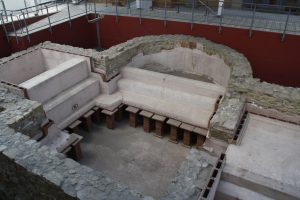
Römermuseum Osterburken – remains of the bathhouse. Photo by Michel Gybels.
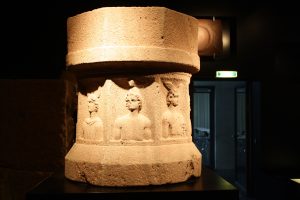
Römermuseum Osterburken – votive column. Photo by Michel Gybels.
Welzheim – ORL 45
The Romans built two forts at what is now Welzheim-Ost as part of the Upper German-Rhaetian Limes defensive network. They were both constructed with stone around AD 155–160, with the larger fort accommodating a whole cohort and the smaller fort to the east housing between 150 and 200 men. An accompanying vicus sprang up along the line of a road connecting the two forts. The forts and the vicus are all believed to have fallen victim to the Germanic invasions of AD 260.
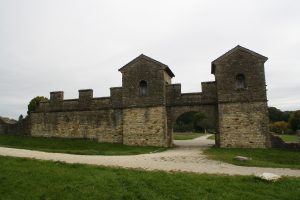
Reconstructed gates of the eastern fort. Photo by Michel Gybels.
The western fort has been built over and there is no trace of it at ground level. The eastern fort, however, has been restored and partially reconstructed to give a good idea of its original layout and appearance. The fort’s west gate (porta praetoria) has been rebuilt and the positions of major buildings within the fort’s walls are indicated on the ground. Finds from the site are preserved in the Welzheim City Museum and in museums in Stuttgart and Aalen. An archaeological park was founded on the site with many replicas of Roman sculpture and explanatory monuments plaques.
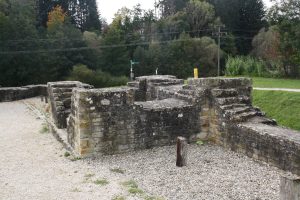
Remains of original roman constructions. Photo by Michel Gybels.
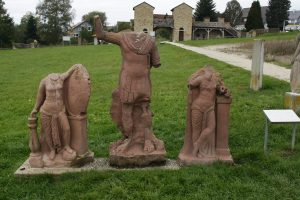
Replicas in the archaeological park. Photo by Michel Gybels.
Aalen – ORL 66
In Aalen is the Limes Information Centre for the state of Baden-Württemberg located. Aalen was also the largest Roman cavalry fort north of the Alps, covering 6 hectares. The garrison was home to 1000 soldiers of the Ala II Flavia Miliaria, the largest and most important troop on the whole Limes. The headquarters (principia) of the Aalen fort has been excavated and preserved and the foundations of the porta principales sinistra, the gate at the left-hand end of the fort, can also be seen. The museum provides comprehensive information about the Limes, the forts, Roman armor and weapons and the civilian settlements.
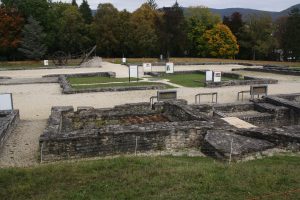
Archaeological site of Aalen. Photo by Michel Gybels.
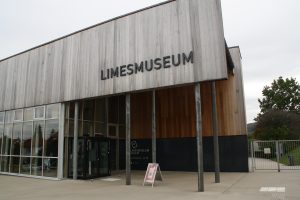
The archaeological museum of Aalen. Photo by Michel Gybels.
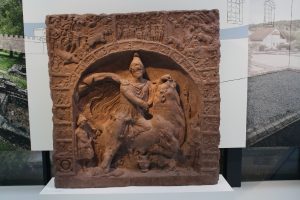
Mithras’ relief displayed on the site. Photo by Michel Gybels.
German Limes on TimeTravelRome
We have spent a very significant amount of time and efforts to provide a good coverage of Roman defensive lines at the borders of the Empire. More than 200 ORL sites – castles and towers – appear on the TimeTravelRome App map with descriptions. Download our App to discover more about the German limes and thousands of other sites across the Roman Empire !
